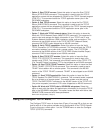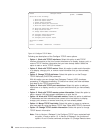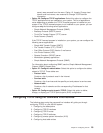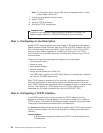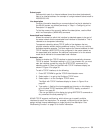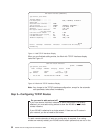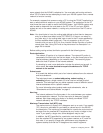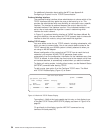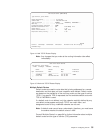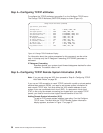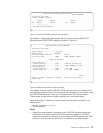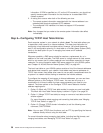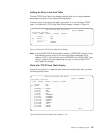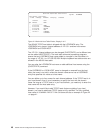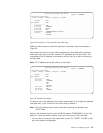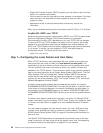
Note: Any changes that you make to the routing information take effect
immediately.
Multiple Default Routes
Default routes are used to route data that is being addressed to a remote
destination and that does not have a specific route defined. Default routes
are based on the availability of the next hop router and the type of service
(TOS). If no specific TOS is requested, the first available default route with
TOS of *NORMAL is used.
If a default route is not defined, only the networks explicitly defined by any
non-default routes appear as though TCP/IP can reach them, and
datagrams bound for any undefined networks are not sent.
Note: A default route cannot have a subnetwork; therefore, you must leave
the subnet mask at the default value of *NONE.
Consult “Multiple Routes” on page 84 for further information about multiple
default routes and the type of service (TOS) parameter.
Add TCP/IP Route (ADDTCPRTE)
Type choices, press Enter.
Route destination .......> '9.4.6.128'
Subnet mask ..........> '255.255.255.128'
Type of service ........ *NORMAL *MINDELAY, *MAXTHRPUT...
Next hop............> '9.4.73.193'
Preferred binding interface . . *NONE
Maximum transmission unit . . . 576 576-16388, *IFC
Route metric.......... 1 1-16
Route redistribution...... *NO *NO, *YES
Duplicate route priority.... 5 1-10
Bottom
F3=Exit F4=Prompt F5=Refresh F12=Cancel F13=How to use this display
F24=More keys
Figure 14. Add TCP/IP Routes Display
Work with TCP/IP Routes
Type options, press Enter.
1=Add 2=Change 4=Remove 5=Display
Route Subnet Next Preferred
Opt Destination Mask Hop Interface
_ ________________ _______________ _______________
_ *DFTROUTE *NONE 9.4.73.193 *NONE
_ 9.4.6.128 255.255.255.128 9.4.73.193
Figure 15. Work with TCP/IP Routes Display
Chapter 2. Configuring TCP/IP 35



